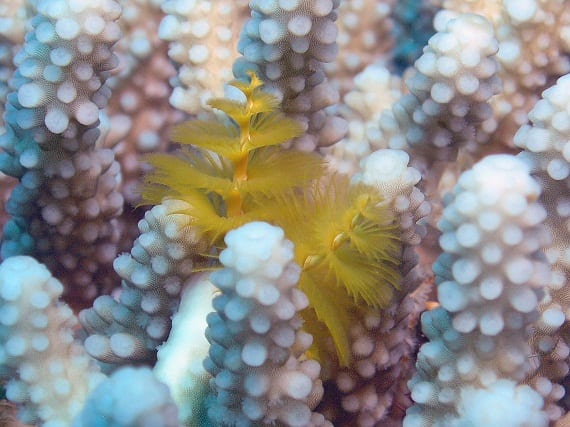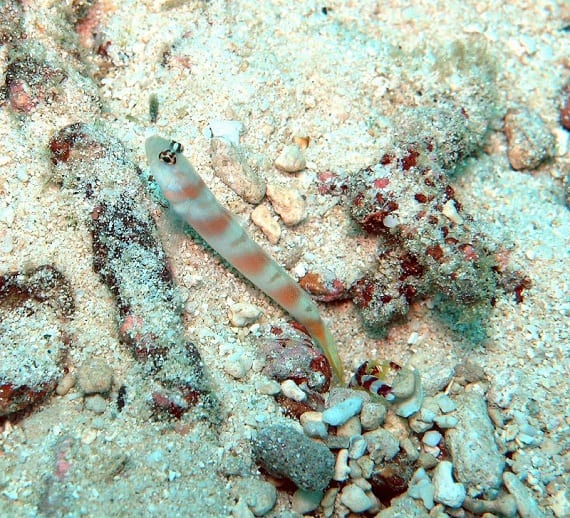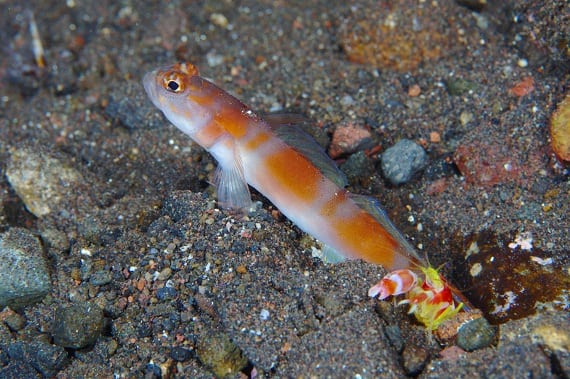December 19, 2014
Holiday Creature Feature: Christmas Tree Worm and Candy Cane Shrimp
Some marine animals don’t have to put any effort into celebrating the holiday season, and instead, celebrate this special time all year long. With the holiday season in full swing, we’re spotlighting two small marine animals that are aptly named for their resemblance to two different holiday symbols: the Christmas tree worm and candy cane shrimp.
Christmas Tree Worm

(Photo: Rob / Flickr Creative Commons)
These worms decorate corals throughout the tropics, and may just be the prettiest marine worms that exist. Christmas tree worms live in a calcareous tube fused into coral, and have two spirals that extend outwards from the worm’s central spine. It is these two appendages that the worm is named for—and they come in a variety of vibrant hues and shapes.
These tentacles are used for respiration and feeding, and catch microscopic plants and phytoplankton throughout the water column. When disturbed or threatened, they quickly pull their heads back into their protective tubes. Christmas tree worms are tiny—growing to be just about an inch and a half long.
Christmas tree worms live in shallow reefs throughout tropical waters. They are sedentary—so once they find a coral head that they like, Christmas tree worms typically remain there for life, says the National Oceanic and Atmospheric Administration.
Candy Cane Shrimp

A goby fish with a candy cane shrimp. (Photo: Jan Messersmith / Flickr Creative Commons)
This shrimp has beautiful coloration with its red and white stripes. This shrimp, also known as the Randall’s pistol shrimp, is native to the Indian and Pacific oceans. Candy cane shrimp are known for their mutualistic relationship with the Randall’s prawn goby, according to the Smithsonian Ocean Portal. These fish hover over the shrimp and protect in from predators, and in turn, the shrimp digs a protective burrow in the sand for these two critters. Randall’s prawn goby are incredibly loyal to these shrimp with poor eyesight—even after the fish finds a mate, it will still inhabit the same burrow as the shrimp!

A goby fish with a candy cane shrimp. (Photo: Klaus Stiefel / Flickr Creative Commons)
MOST RECENT
September 3, 2025
Air Raid Panic to Informed Skies and Seas: The National Weather Service in a Nutshell
August 29, 2025
August 22, 2025
Corals, Community, and Celebration: Oceana Goes to Salmonfest!



